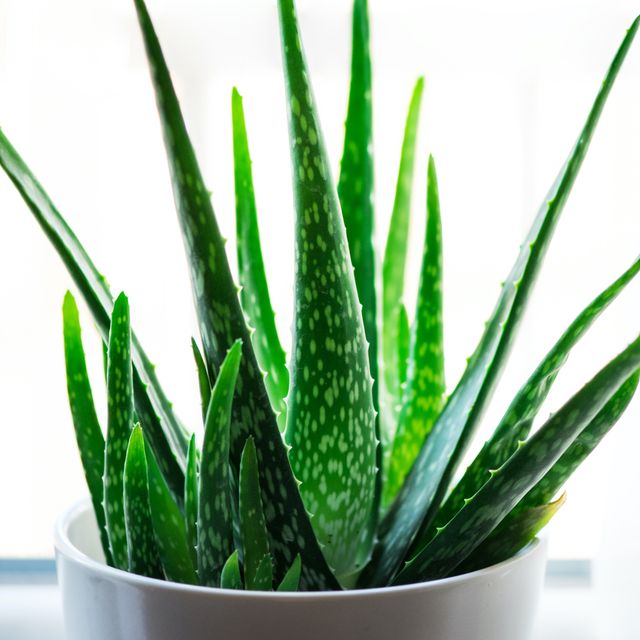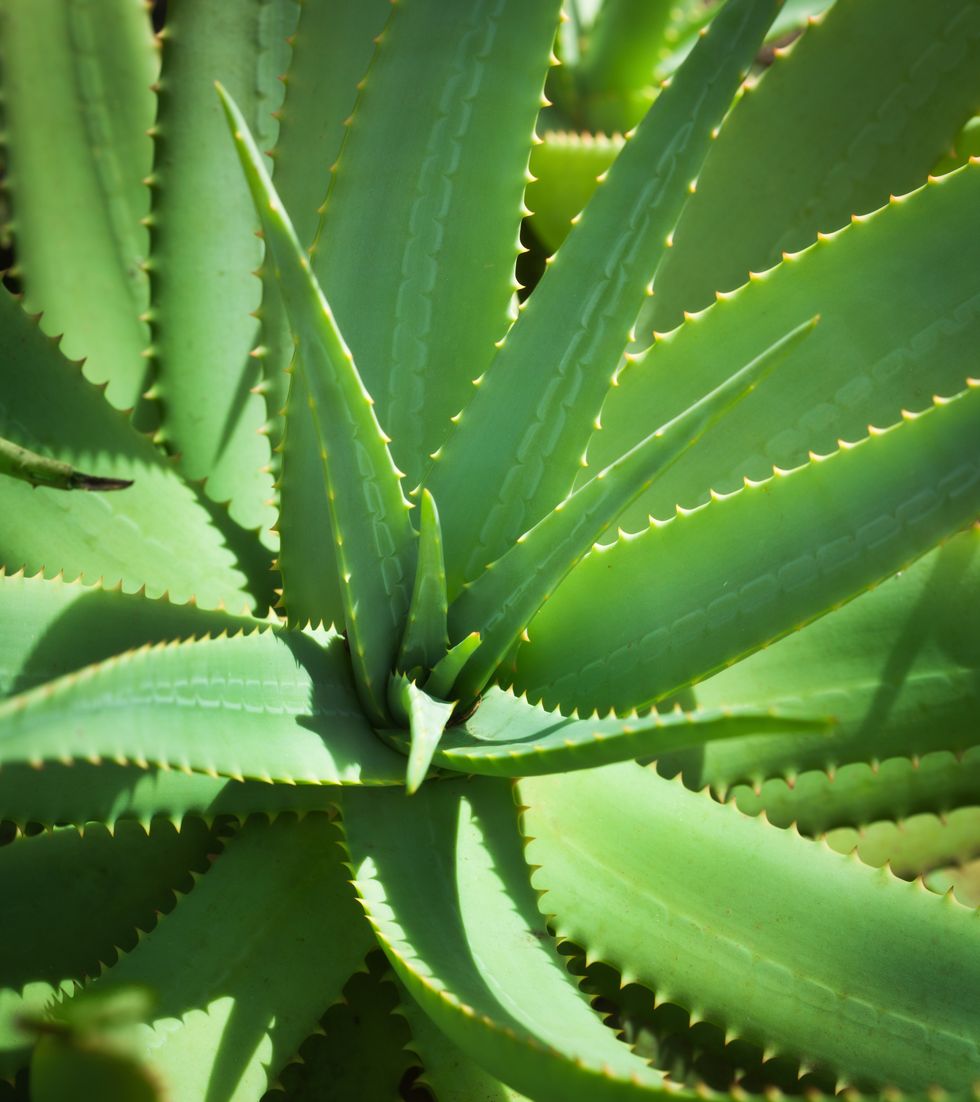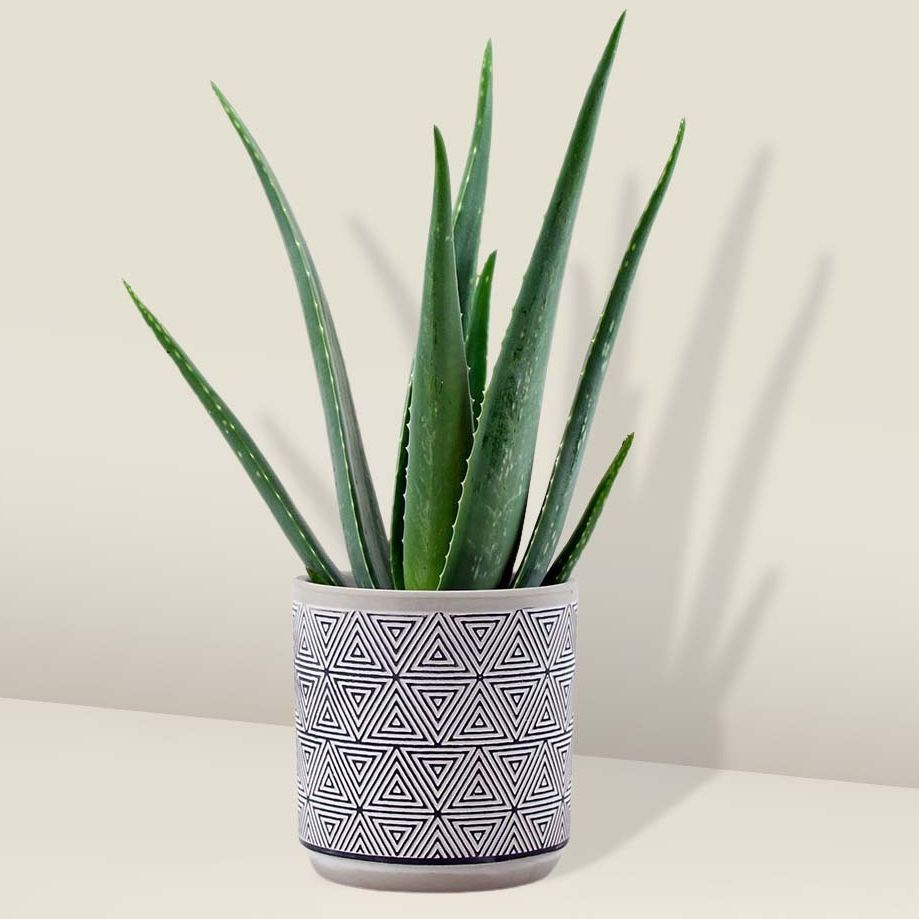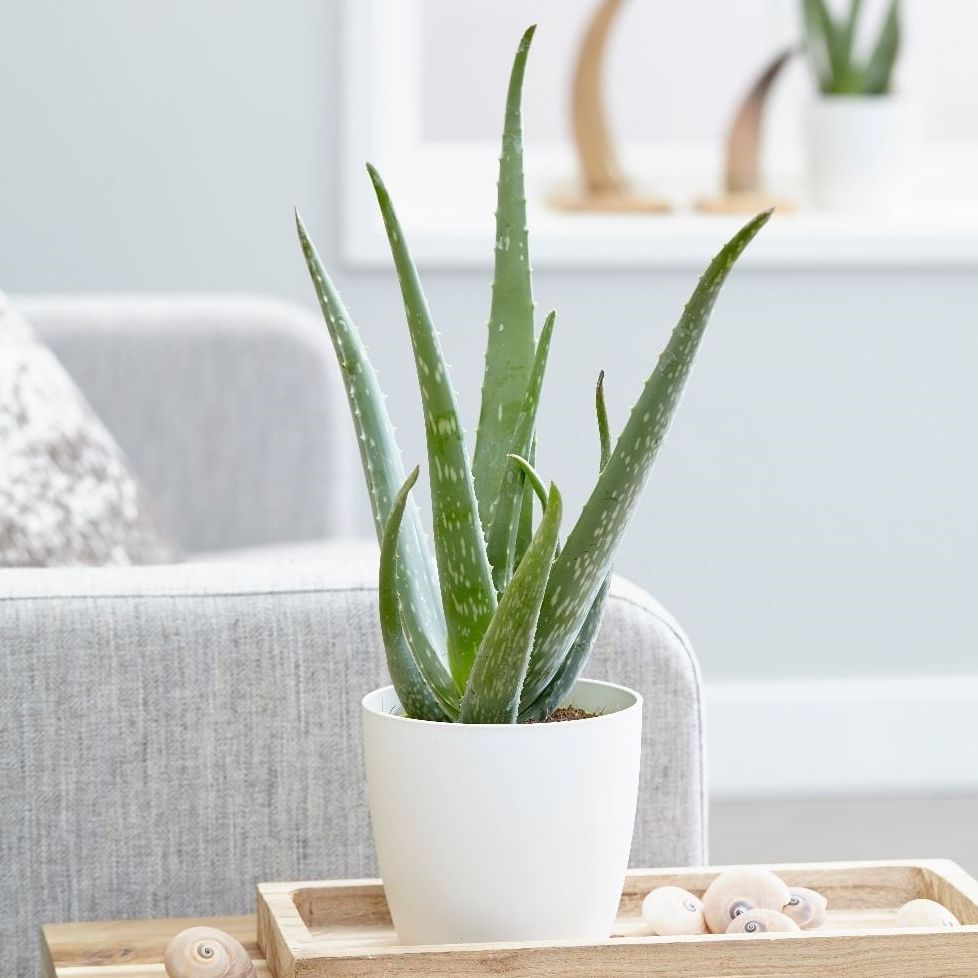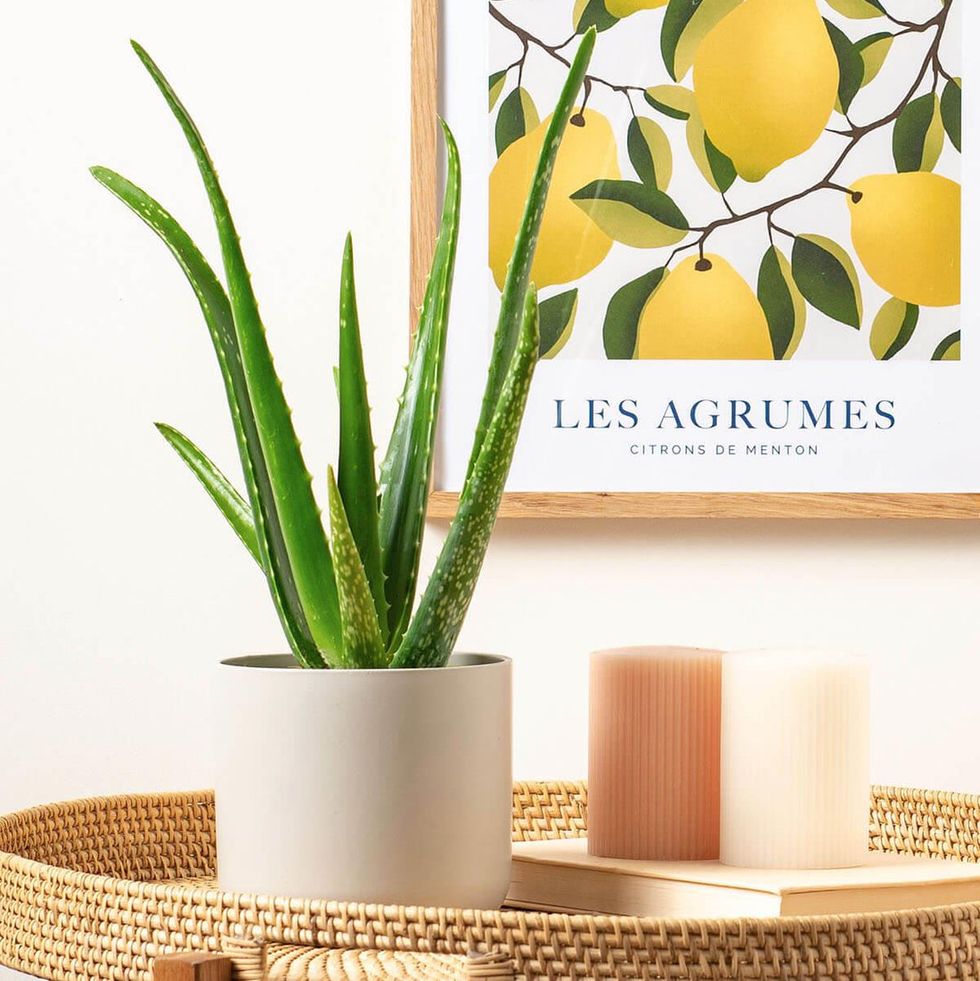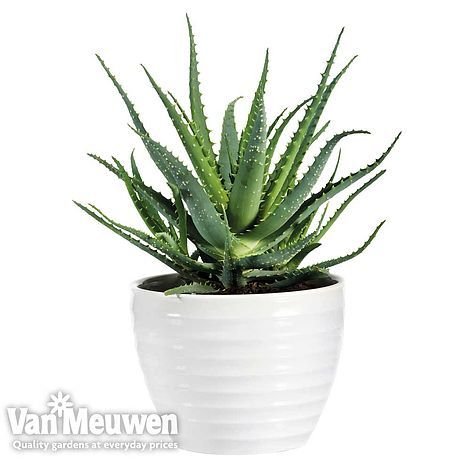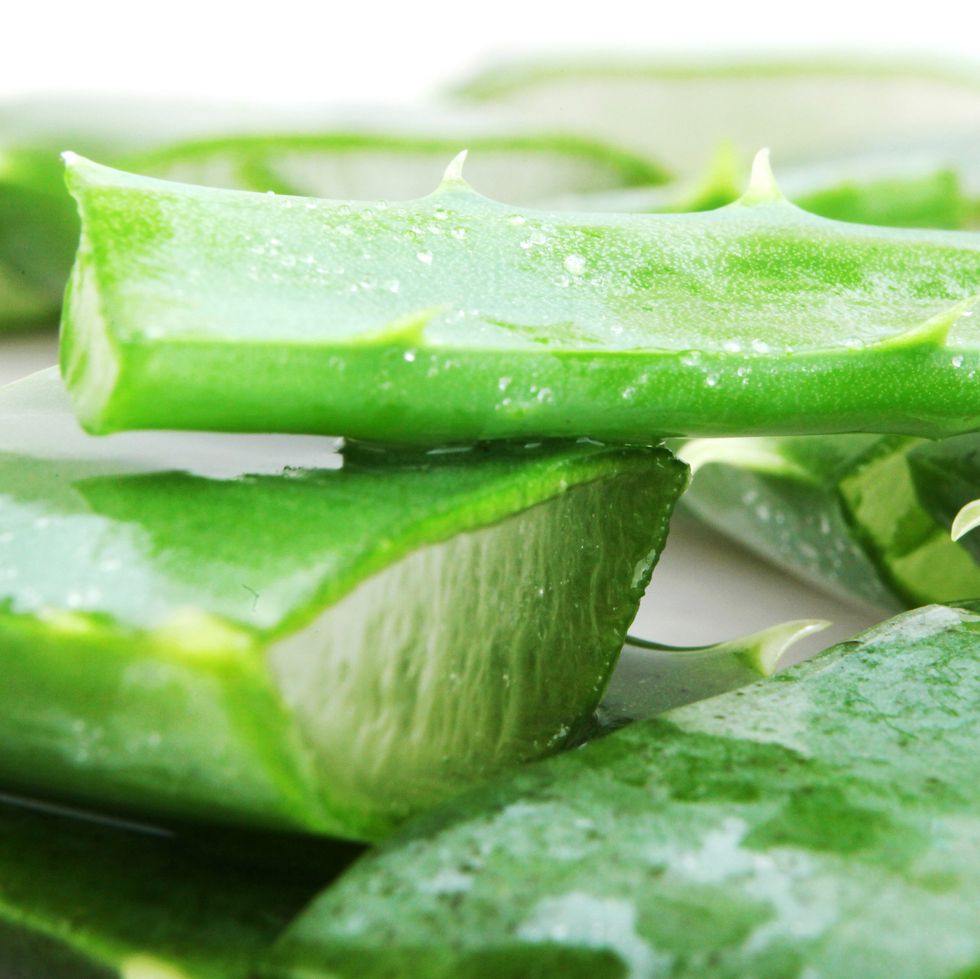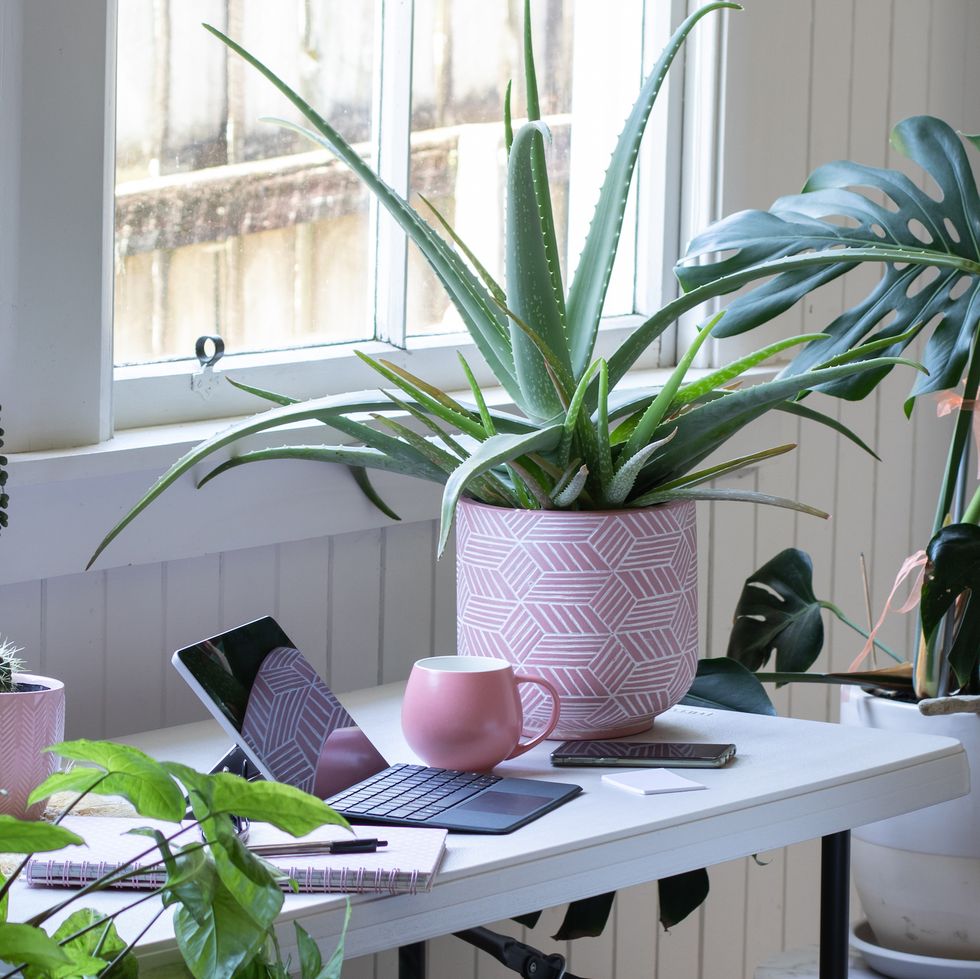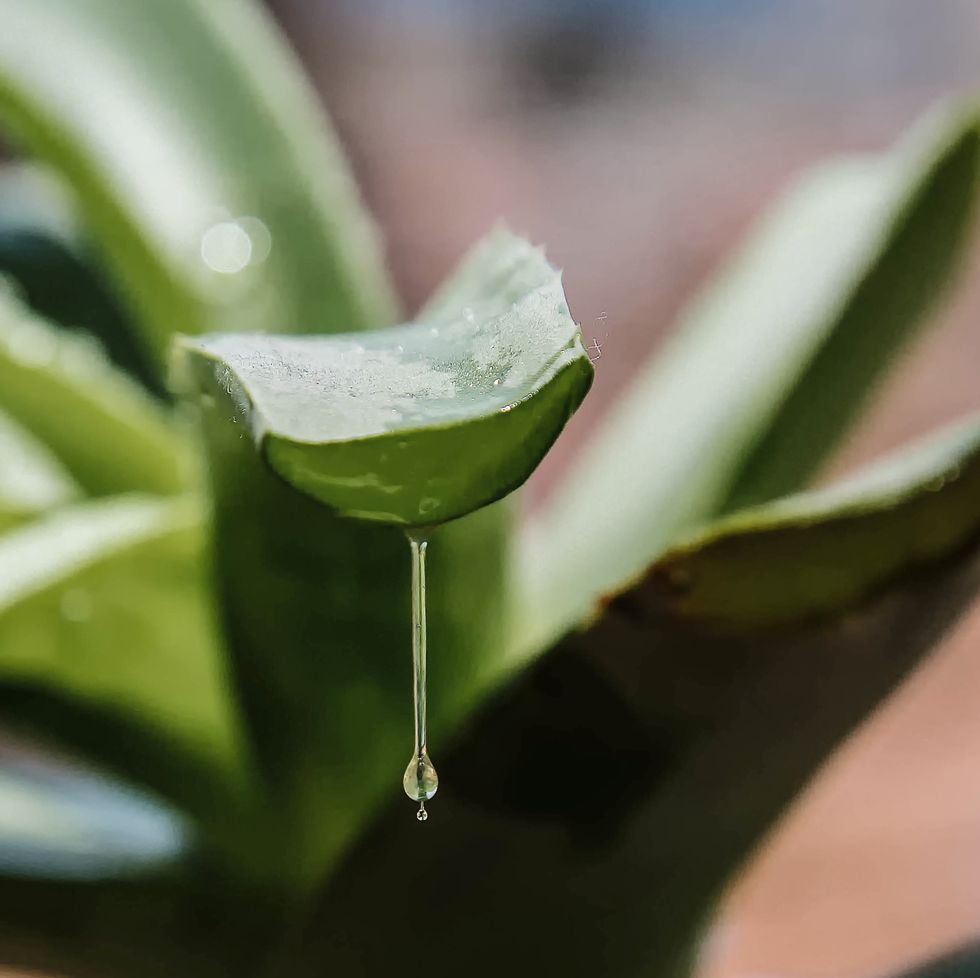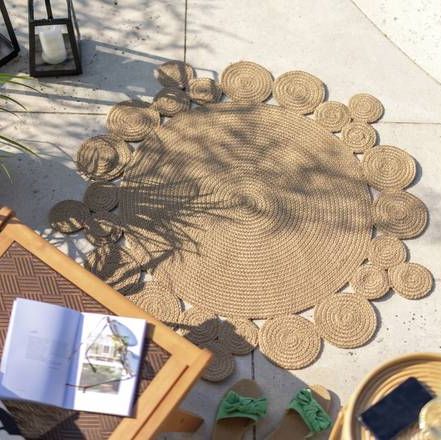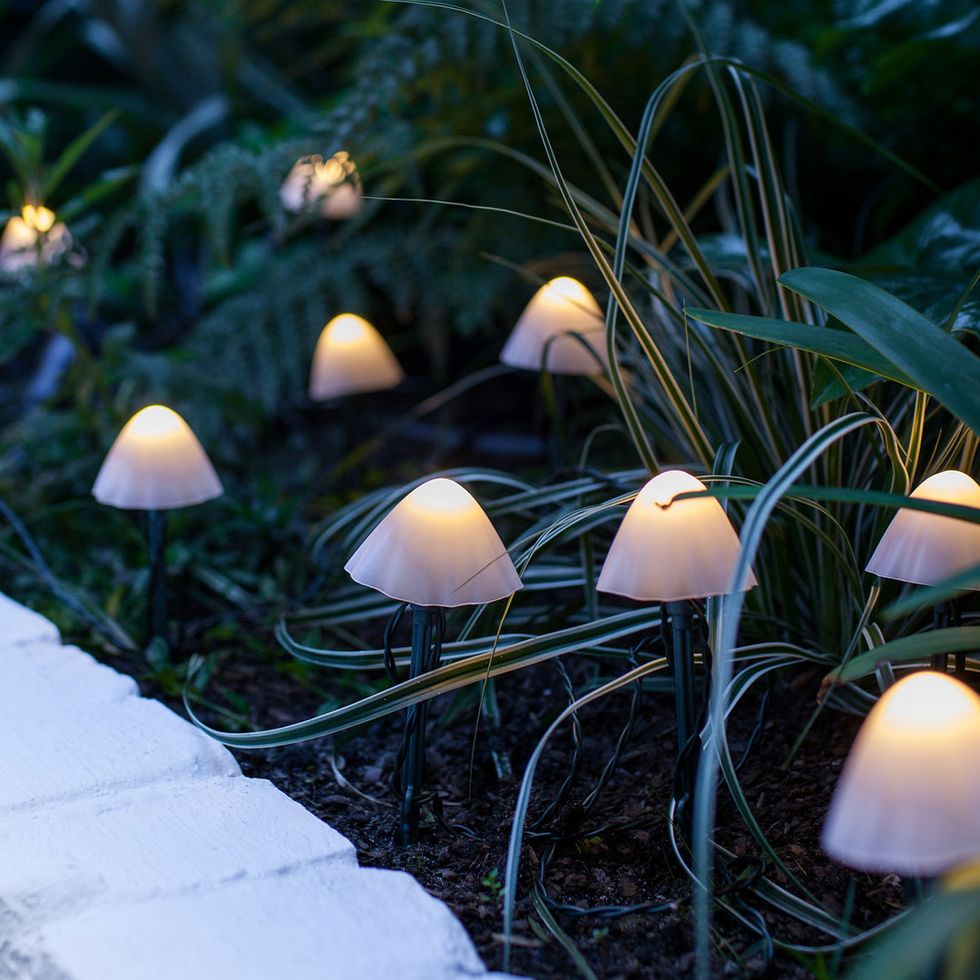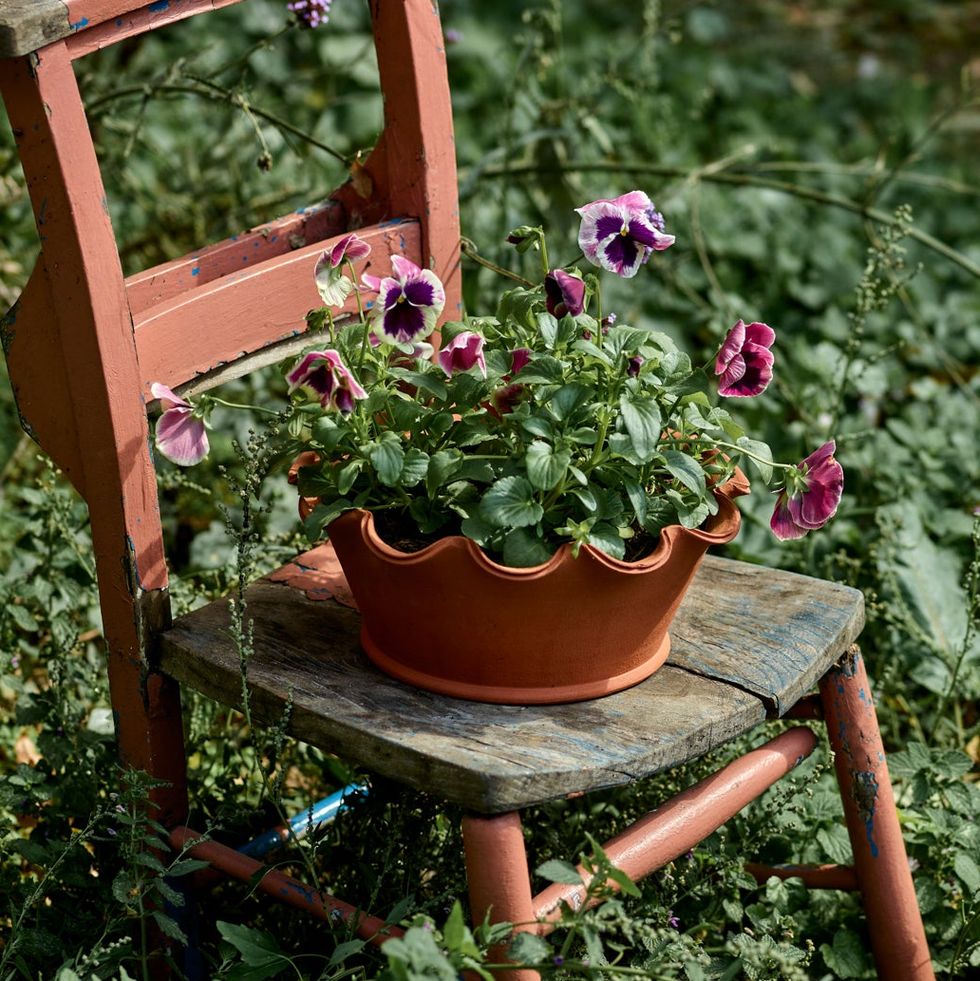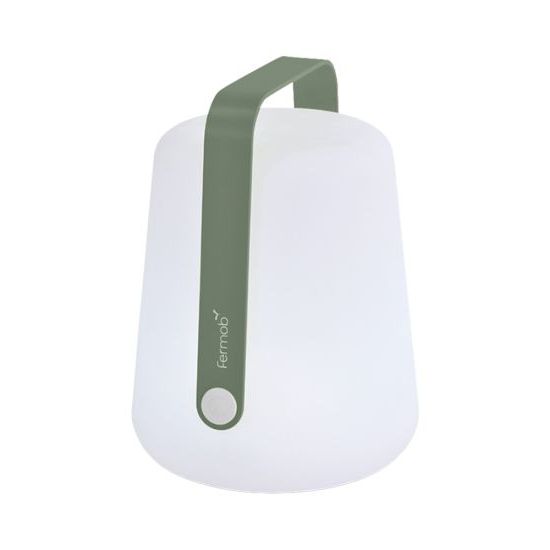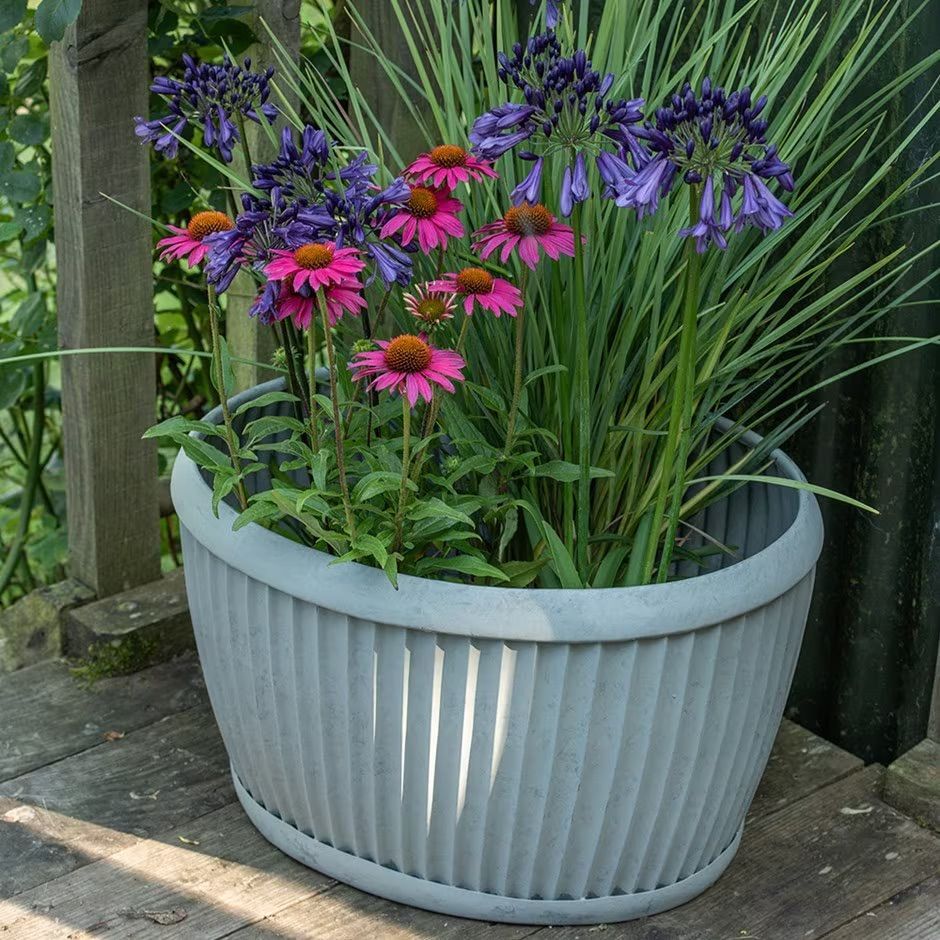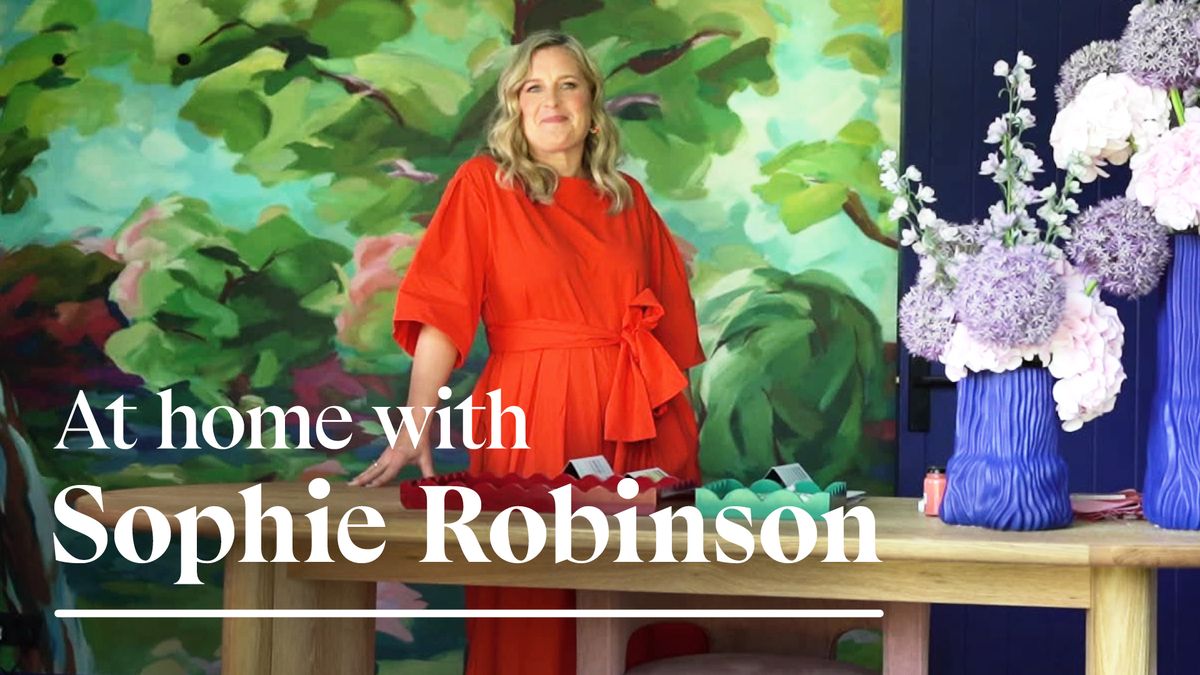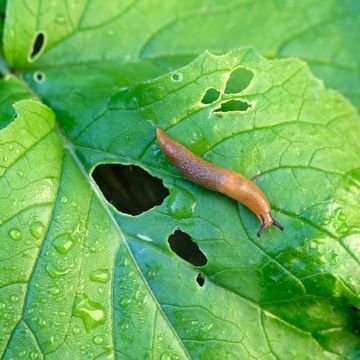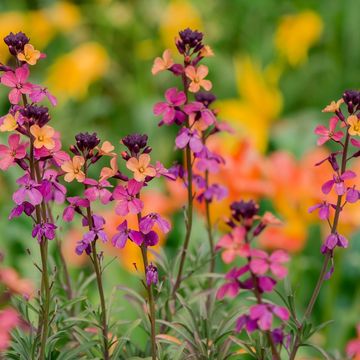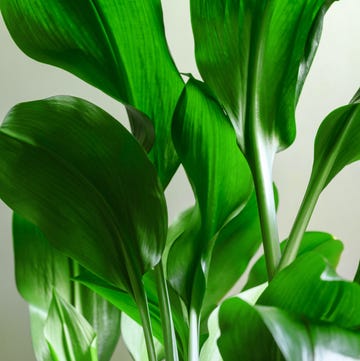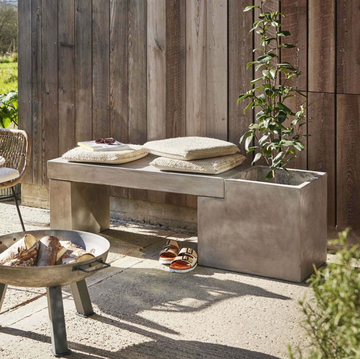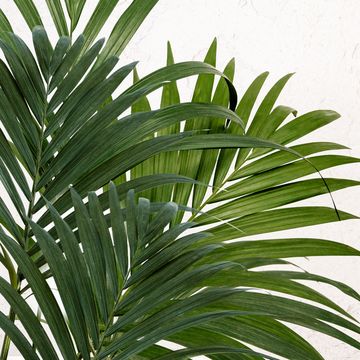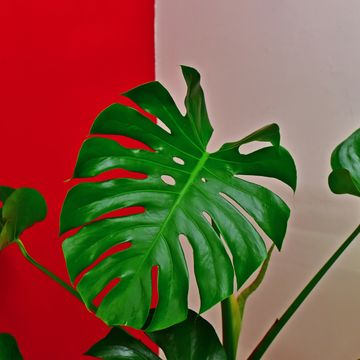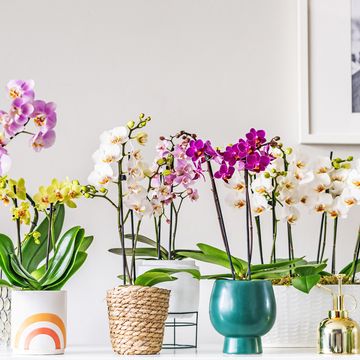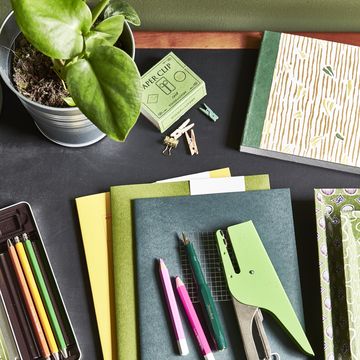If you're looking for an easy-to-care-for, attractive and useful houseplant, Aloe vera is an excellent choice. As well as being a looker, this plant really pulls its weight in a home because its leaves have the property of relieving pain from burns and abrasions. In fact, Aloe vera has been used for medicine and beauty-related benefits for thousands of years, and in ancient Egypt the plant was known as 'the plant of immortality'.
This fast-growing succulent has thick, spiky stems which grow from the base of the plant in a rosette shape. Its leaves have jagged edges and flexible spines, and it can produce spiked flowers in shades of red, orange and yellow.
What is Aloe vera?
The Aloe vera plant is originally native to the Arabian Peninsula, but it can now be found all over the world. In the wild, this spiky plant can grow up to a metre wide and has more than 300 varieties. As a houseplant, it's an attractive tropical proposition. Its serrated, fleshy leaves are striking, and as it's a succulent it doesn't require much watering – in fact, it's better if you forget about it for a while between waterings, as overwatering could kill it.
Aloe vera can and does produce flowers in the wild, although not so much as a houseplant. Placing the plant outside in the summer can encourage it to flower. It grows fast, reaching a mature size in just three to four years, and of course, its healing properties make it a truly useful green companion to have around the house.
Popular varieties include Aloe brevifolia with round, bluish leaves which turn golden in the sunlight, Aloe polyphylla, a large, egg-shaped variety which has green leaves tipped with purple, Aloe ciliaris which has tube-shaped orange flowers, and Aloe aculeata, a thorny variety with stiff yellow-coloured leaves.
Aloe Vera at a glance:
• Botanical name: Aloe barbadensis miller.
• Other names: Aloe vera, Barbados aloe, bitter aloe, burn aloe, Curaçao aloe, first aid plant, medicinal aloe, Mediterranean aloe, West Indian aloe.
• Height and growth rate: Fast-growing. As a houseplant, Aloe vera will reach maturity in three to four years, with a mature leaf size of around 20-25cm.
• Light: Needs bright but indirect light. Doesn’t respond well to either full sunlight or low light.
• Watering: This plant needs to be watered deeply, but infrequently. It must be allowed to fully dry out between waterings, and overwatering can be fatal.
• Temperature: It's a tropical plant, so it prefers warmer temperatures.
• Toxicity to pets: Toxic to pets if ingested.
• Plant parent level: This plant is low maintenance, so it's a great choice for someone starting to build up their confidence with houseplants.
How to care for your Aloe vera plant
Light
This tropical succulent needs a lot of light – as a minimum, six hours of bright, indirect light a day. Without this, Aloe Vera grows leggy and weak, and its stems may topple over or stretch. Artificial lights can be used if you're determined to grow Aloe vera but your home will lack the requisite brightness. It's important to remember that direct sunlight can burn the leaves, so a southern or western-facing window is the ideal place for a happy Aloe vera plant.
Watering
Making sure your Aloe vera gets enough (but not too much) water is the hardest part of caring for it – and it's not actually that hard at all. As Aloe is a succulent, its leaves store water and it's well-used to arid environments. A good rule of thumb is to water your Aloe vera every two to three weeks in summer, and much more sparingly if at all during autumn and winter. You should always water according to your plant's needs, however. The soil should feel moist post watering, but should be allowed to almost fully dry out before watering it again. If the soil is too wet, the plant's roots will rot.
Temperature
This houseplant needs warm temperatures, so it doesn't do well outside during the colder months in the UK. Between around 13-27 degrees celsius is a good rule of thumb. In the summer months, placing your Aloe vera outside is fine, but do bring it back into your cosy living room once the nights start cooling off.
Maintenance
This plant is fairly low maintenance and doesn't need much in the way of care. It does require the odd bit of pruning if the leaf tips begin to brown, and plant parents should keep an eye on the size of their plant. Aloe vera has a shallow root system that likes to spread out close to the surface, so as your plant baby grows it may well need repotting. You only need to fertilise it once a year, in the spring.
Aloe vera gel and its benefits
Cut open an Aloe leaf and you'll find a clear, sticky gel inside. This gel is great for burns of all kinds, and may shorten healing time and promote general wound healing. There's also some evidence to show that the gel can have positive effects on acne and psoriasis, as well as myriad other uses, such as makeup remover, moisturiser or hair conditioner.
To get these benefits from your plant, snip off a leaf as close to the stem as possible and split it lengthwise, then scoop out the gel with a spoon. There's nothing like it on a bright red and painful sunburn, trust us! It's important not to eat it, however, as it has the potential to cause kidney damage.
Common problems with Aloe Vera (and how to fix them)
Red leaves: This indicates that your plant is getting too much sunlight. Try moving it to a shadier spot to solve this problem.
Paling, yellowing or browning leaves: The leaves of your Aloe vera plant changing colour in this way means your plant is being overwatered. Make sure you let the soil almost fully dry out before watering, and this should fix your problem.
Wrinkled leaves: Conversely, having leaves that aren't full and firm might mean that you're not watering your Aloe enough. Water it lightly over the course of a few days and try gently misting the leaves – but don't soak it through, as this plant hates having wet feet.
Common pests: Aloe vera can tend to attract some household bugs such as mites, scales and mealybugs. Wipe the leaves with a soft cloth to deter visitors, and try spraying it with an insecticidal soap. For mites, it's key to prune away all the infected tissue, or the mites could spread throughout your whole plant.
MORE HOUSEPLANT PROFILES:
- Bonsai Tree
- Calathea Plant
- Dragon Tree
- Kentia Palm
- Money Tree
- Rubber Plant
- Swiss Cheese Plant
- String of Hearts
Follow House Beautiful on Instagram.
